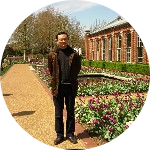
Renying Zhou
Hangzhou, Zhejiang, 311400, P. R. China
State Key Laboratory of Tree Genetics and Breeding, The Research Institute of Subtropical of Forestry, Chinese Academy of Forestry
Professor
More
Renying ZHUO
1991.9-1995.6 Lanzhou University, Plant physiology. Bachelor degree 1997.9-2002.6 Chinese Academy of Forestry, Tree genetics and breeding, Ph.D. 2002.6-2011.10 The Research Institute of Subtropical Forestry, Chinese Academy of Forestry, Associate Professor. 2011.10 to now, Research Institute of Subtropical Forestry, Chinese Academy of Forestry, Professor.
I am a professor at the Research Institute of Subtropical Forestry at the Chinese Academy of Forestry. My previous research is plant physiology on abiotic stress for my doctor’s degree. I’m very interested in plant stress physiology because it can help us understand how the plants respond to environmental stresses, and further identify some key genes involved in environmental stresses. Then, the key genes are used to breed new varieties of crops and trees, which will improve the quality of human being’s life and the environment. PacBio’s newest SMRT Sequencing platform help us deeply understand the genomic basis of hyperaccumulator plants resistant and absorb heavy metals. This project will fill the genome informations gaps of hyperaccumulator and Crassulaceae plants, and accelerate the new varieties breeding for crops and forest trees by gene transformation. It’s very important for soil phytoremediation in China and even all the world.
This is my group link: http://www.risfcaf.com/cxtd/ShowArticle.asp?Articl...
Selected publications related to the project that my group published:
Selection and Validation of Reference Genes for Quantitative Real-Time PCR in Hyperaccumulating Ecotype of Sedum alfredii under Different Heavy Metals Stress. PLoS One, 2013, DOI: 10.1371/journal.pone.0082927. Integration of Small RNAs, Degradome and Transcriptome Sequencing in Hyperaccumulator Sedum alfredii Uncovers a Complex Regulatory Network and Provides Insights into Cadmium Phytoremediation. Plant Biotechnology Journal, 2016, doi: 10.1111/pbi.12512.March 2016